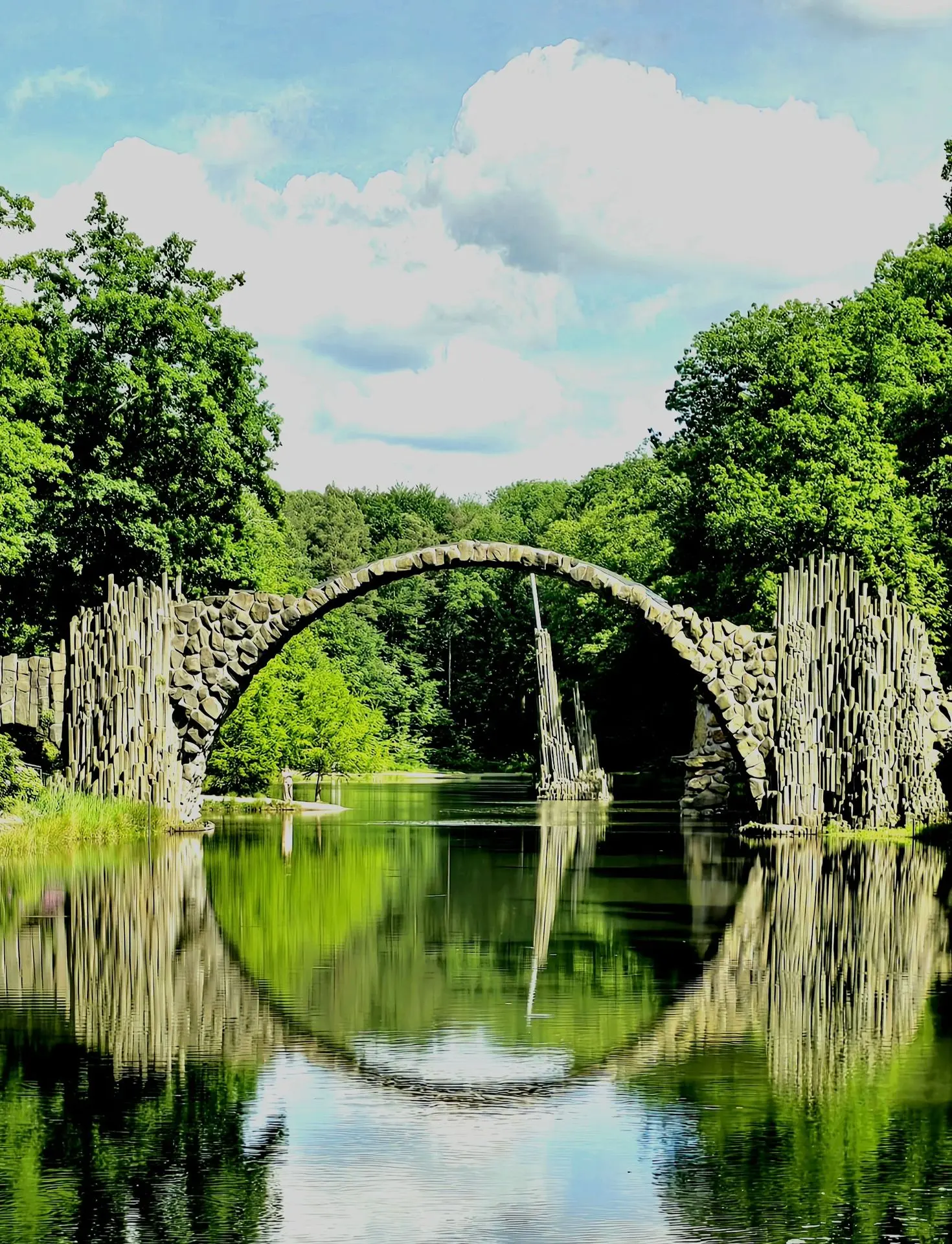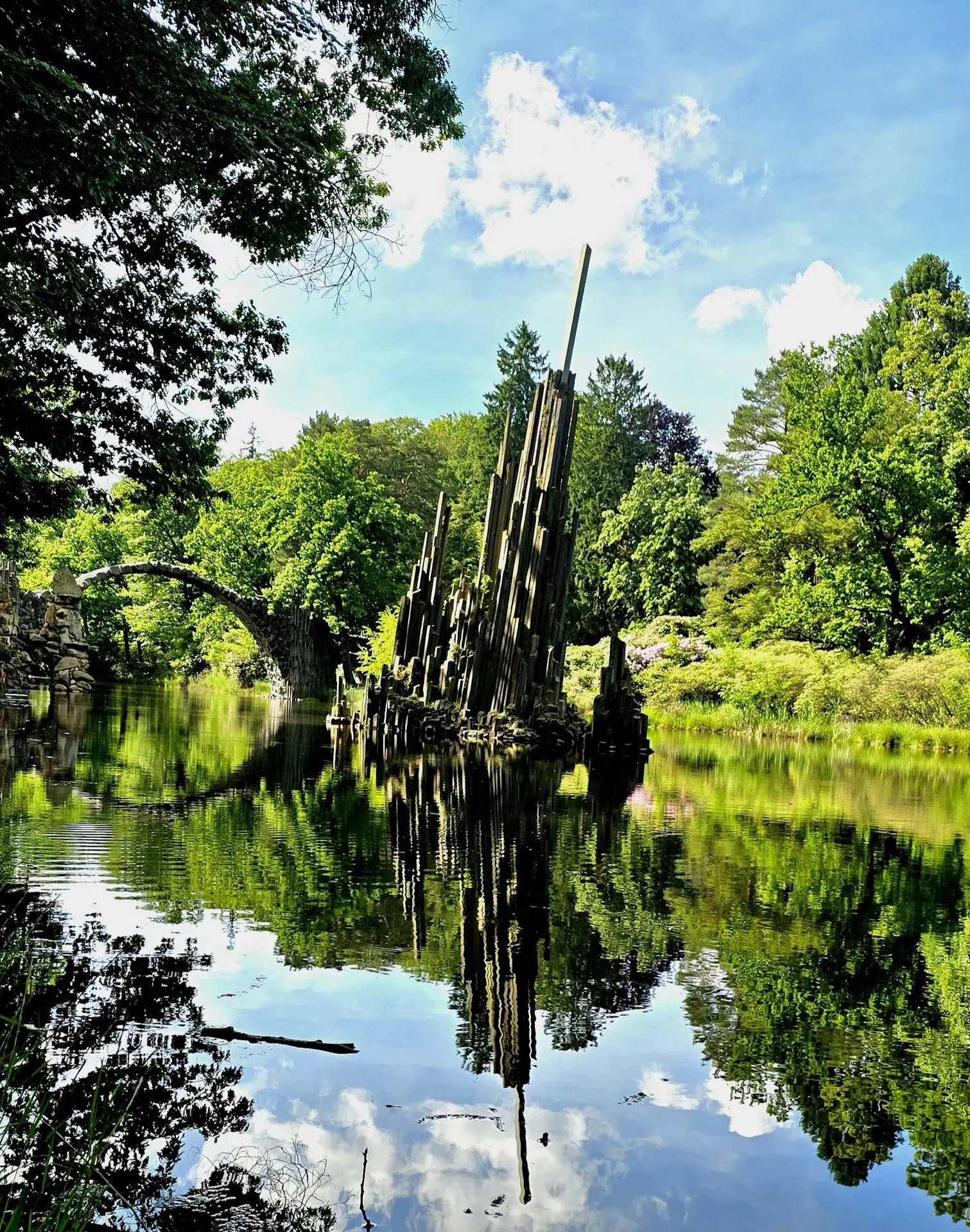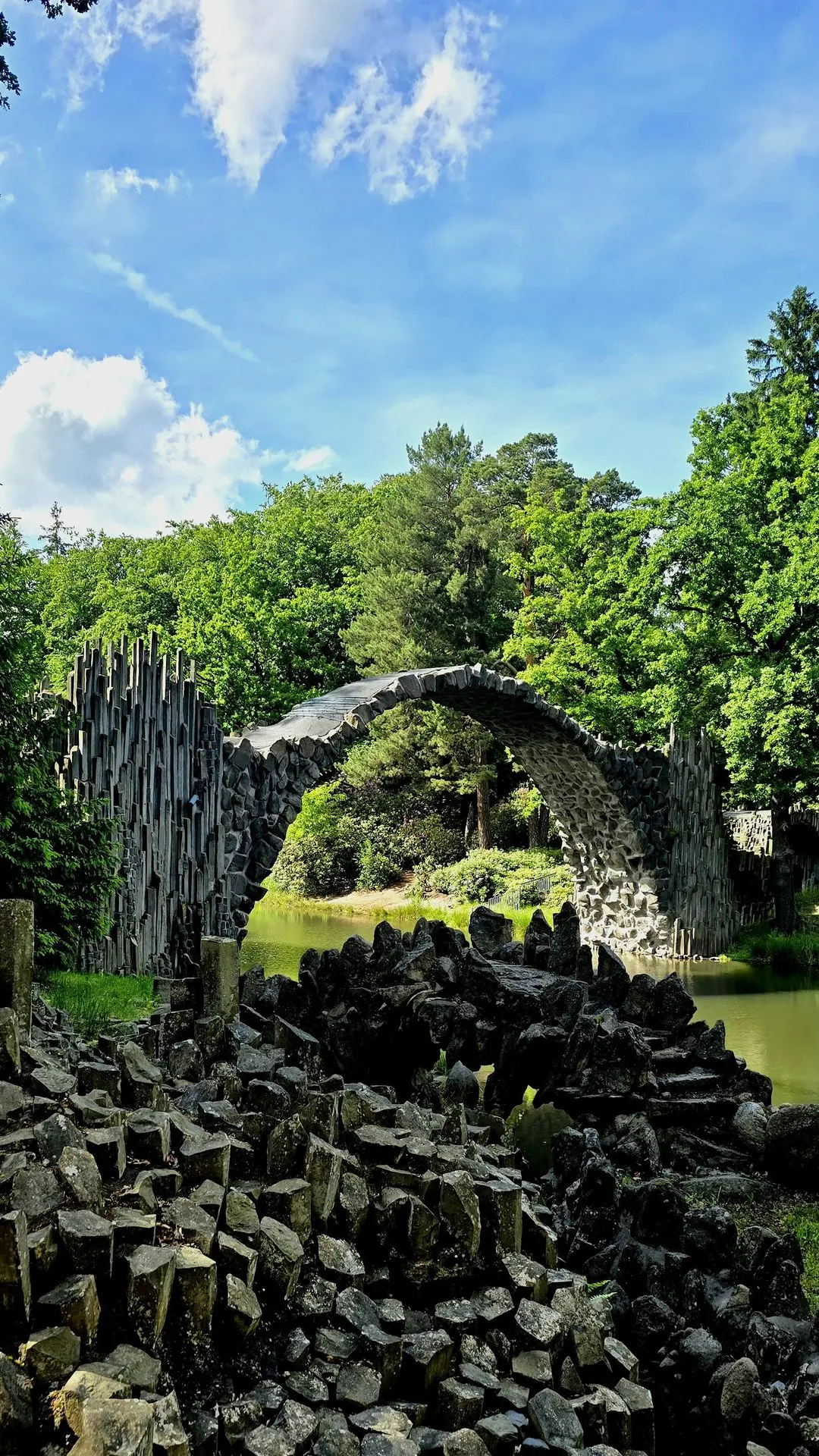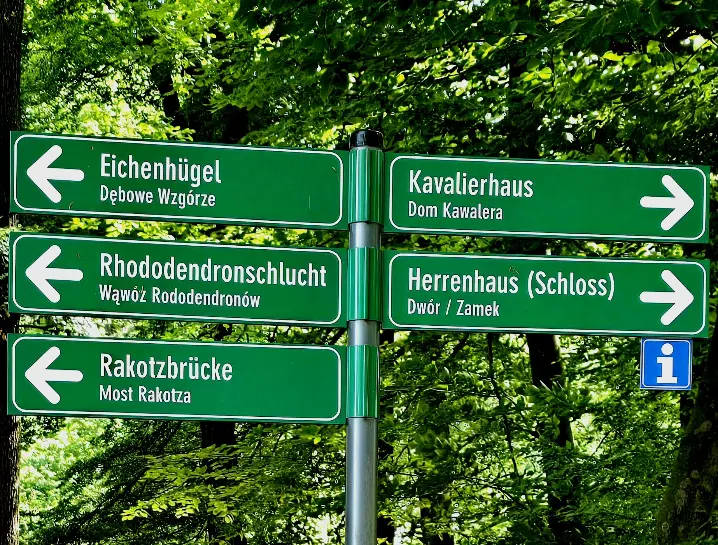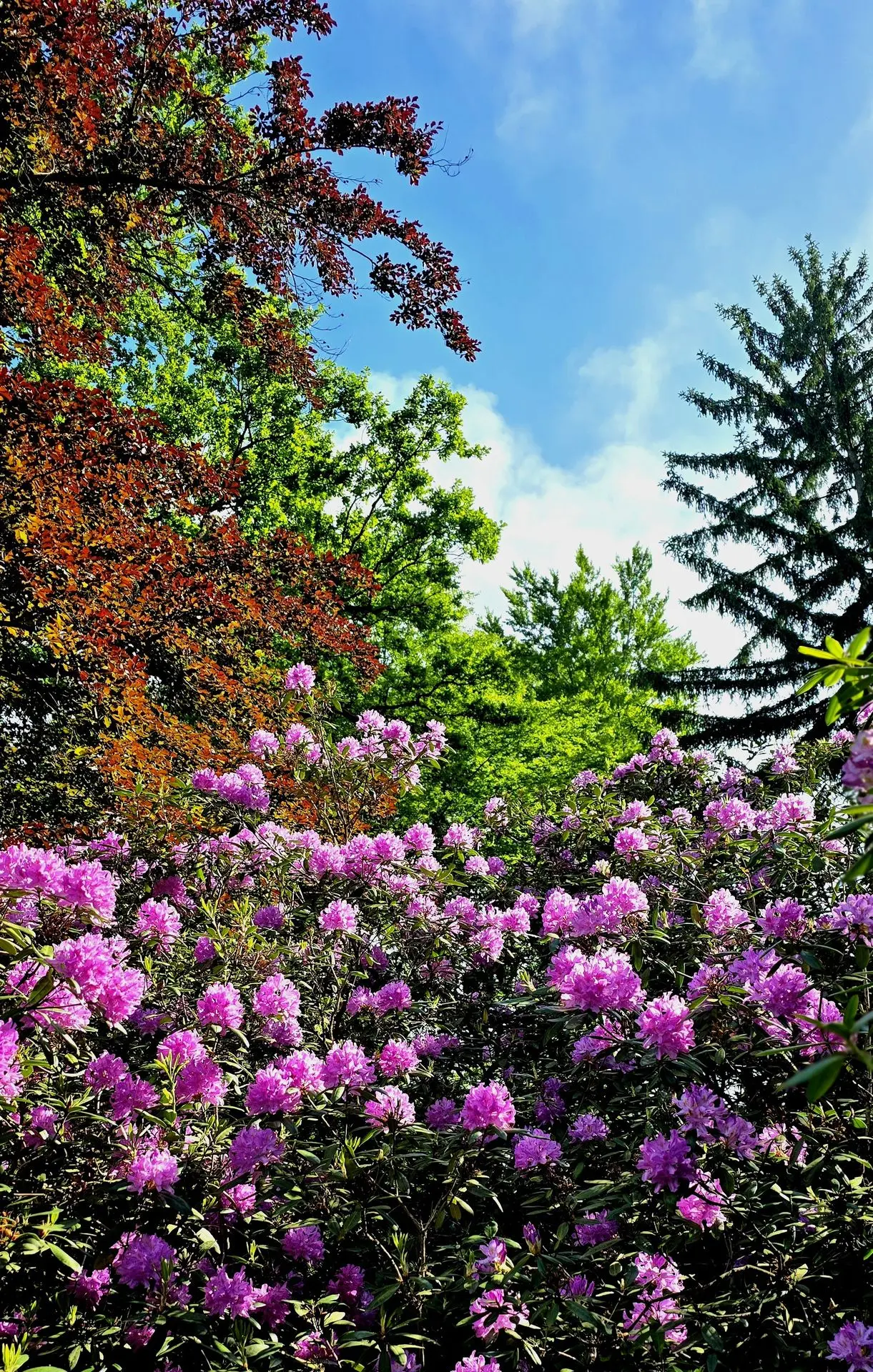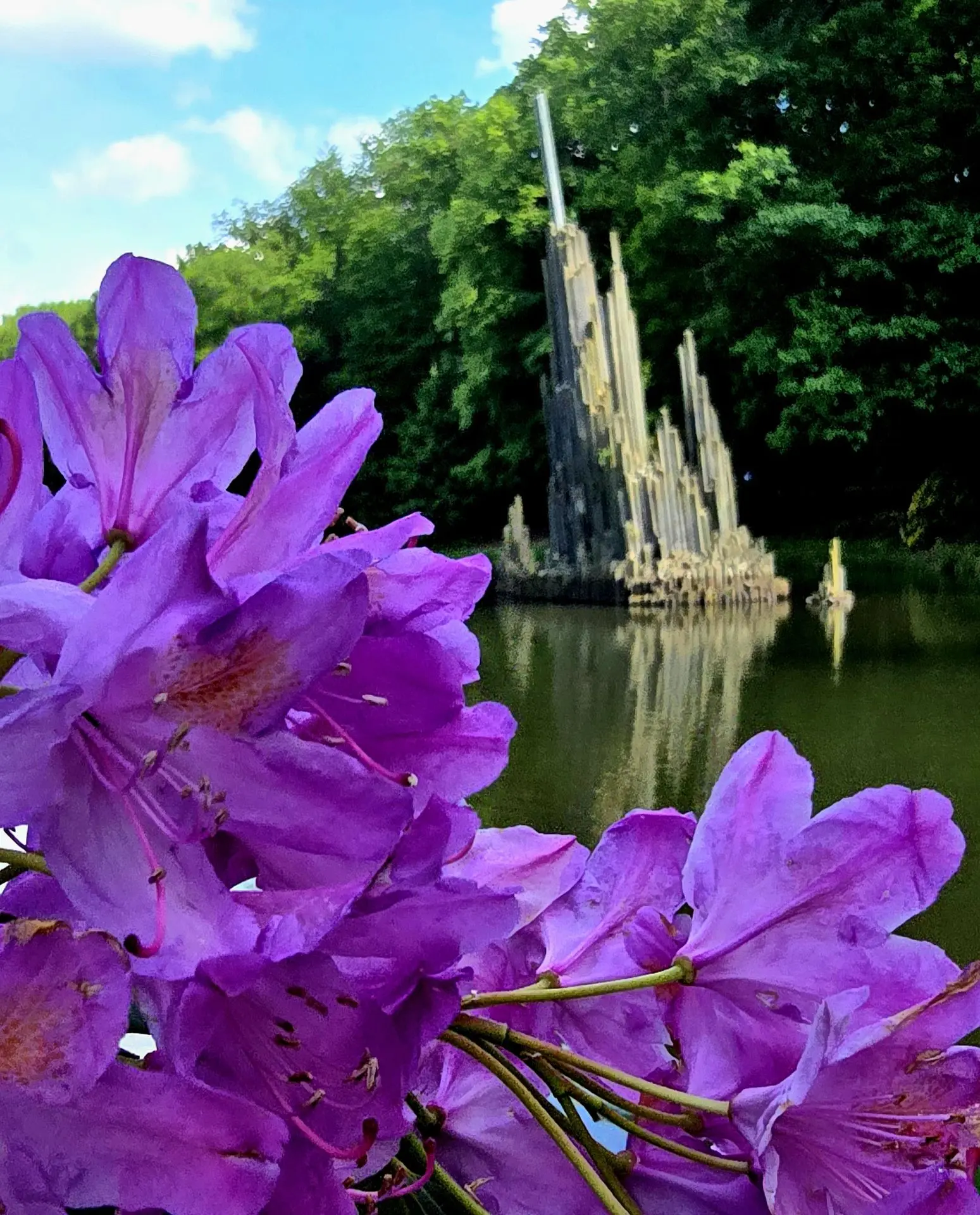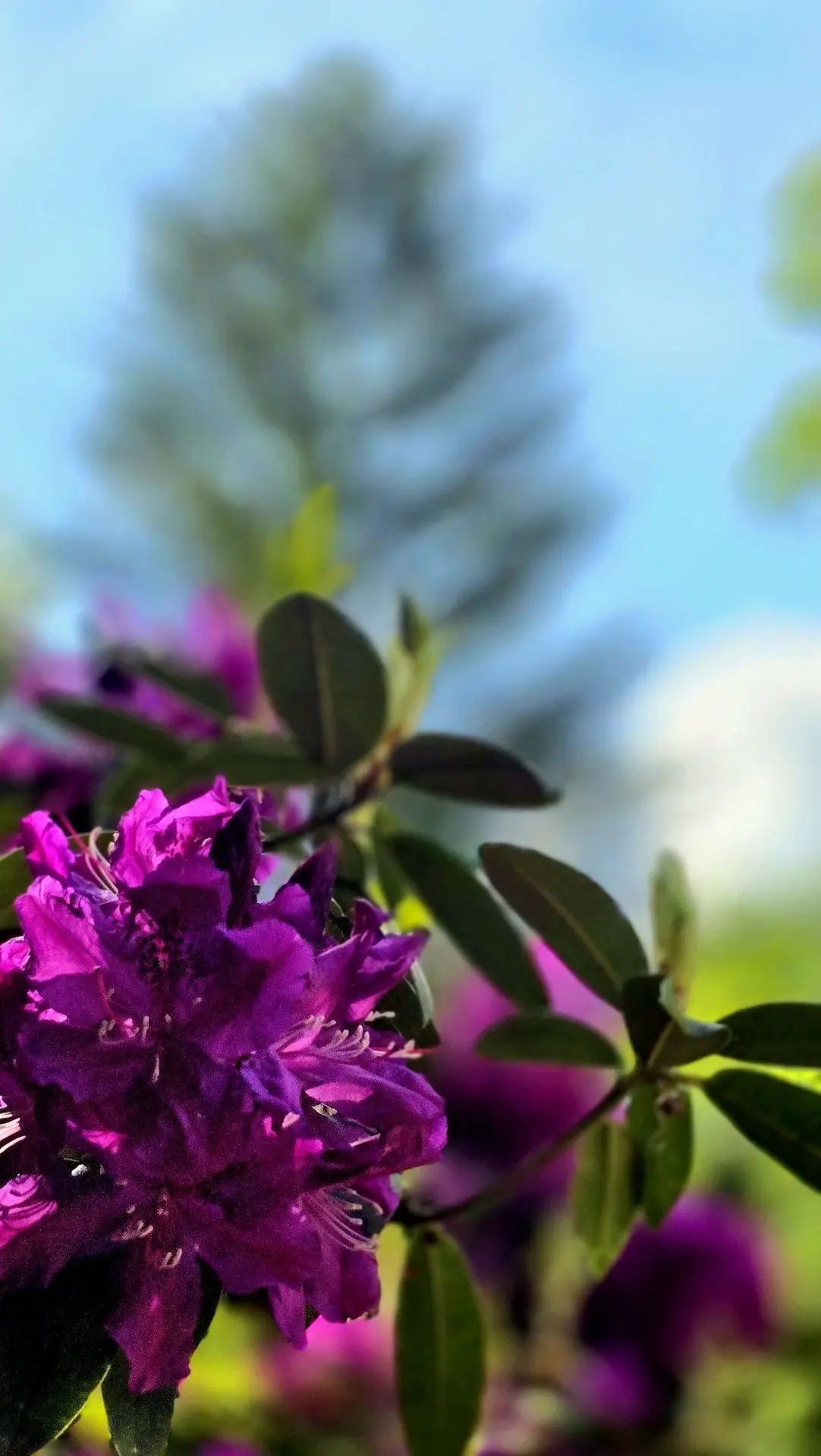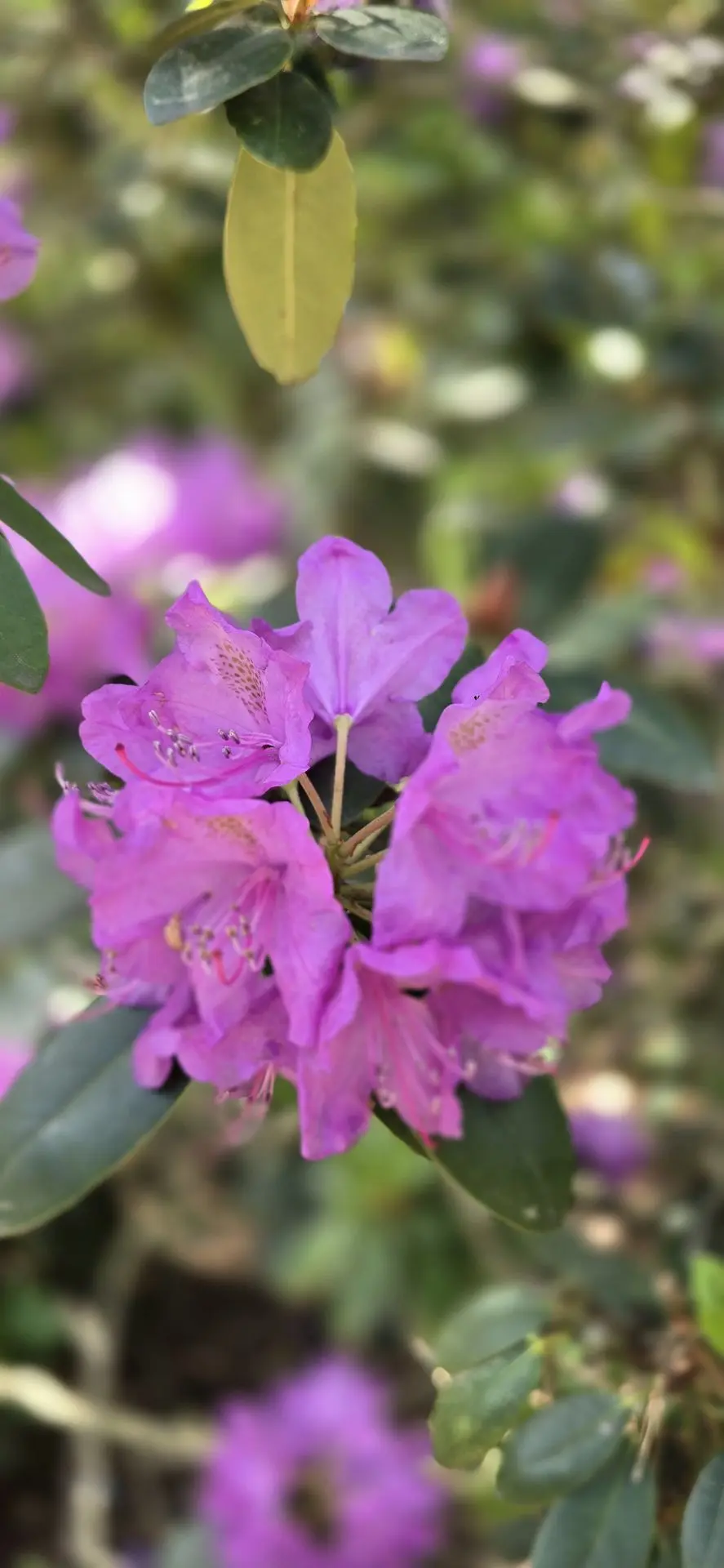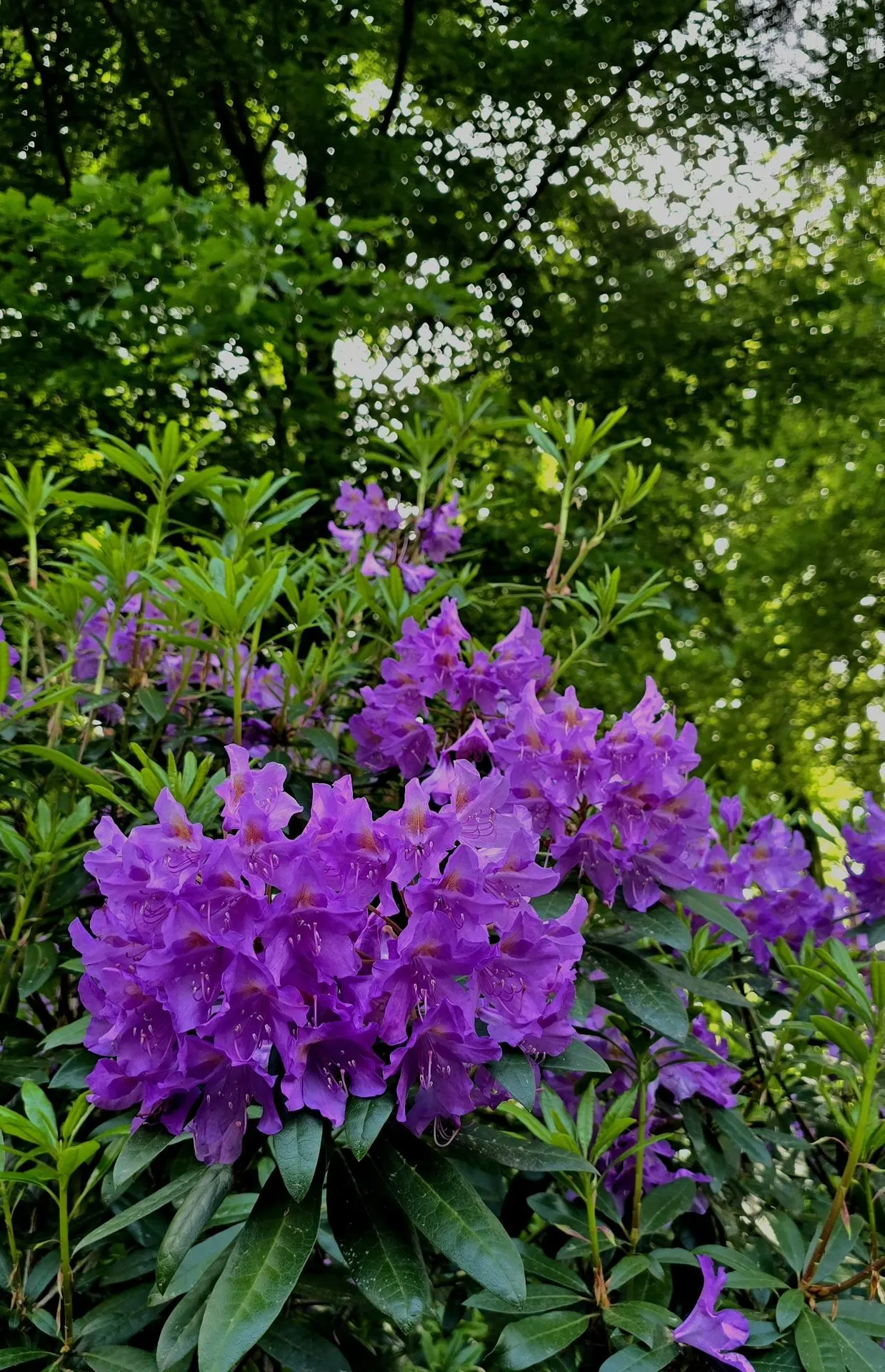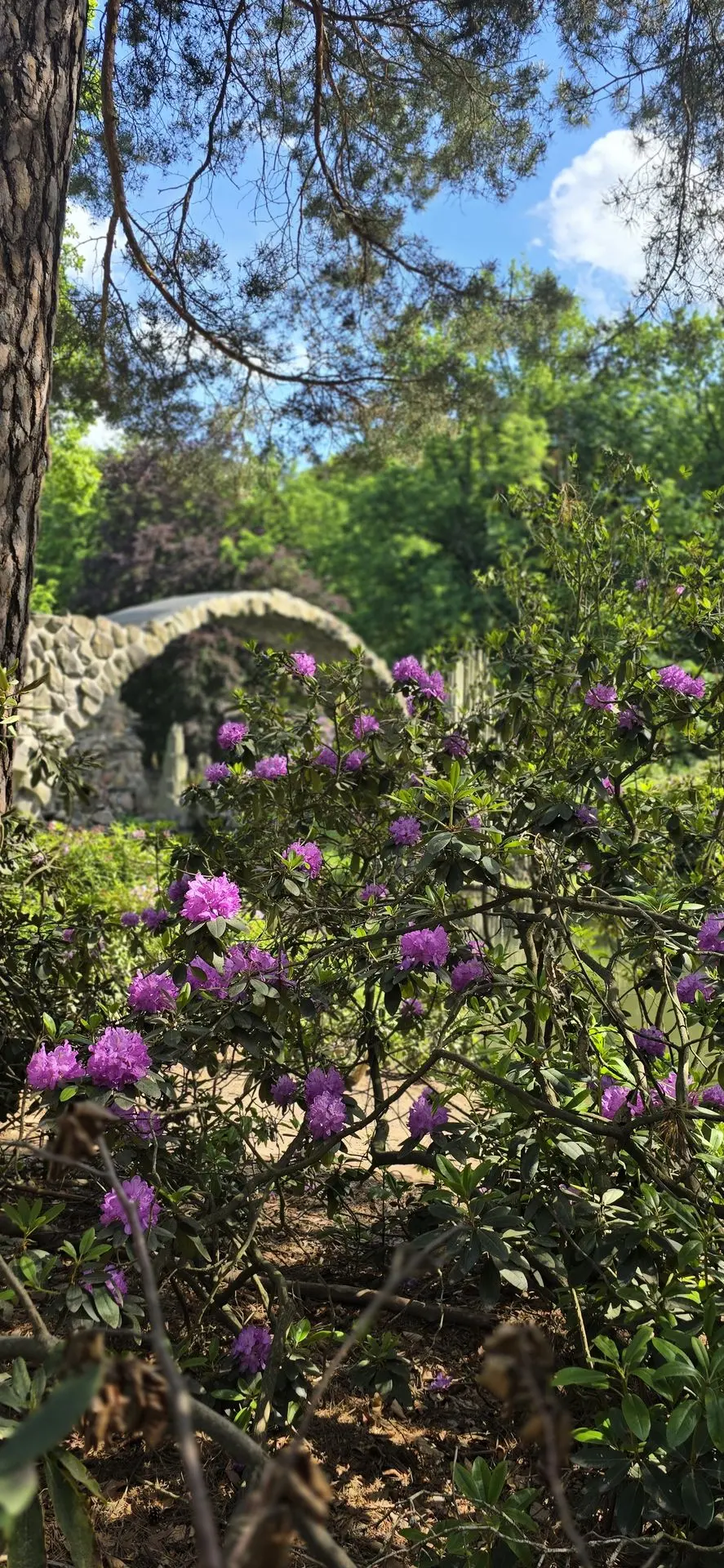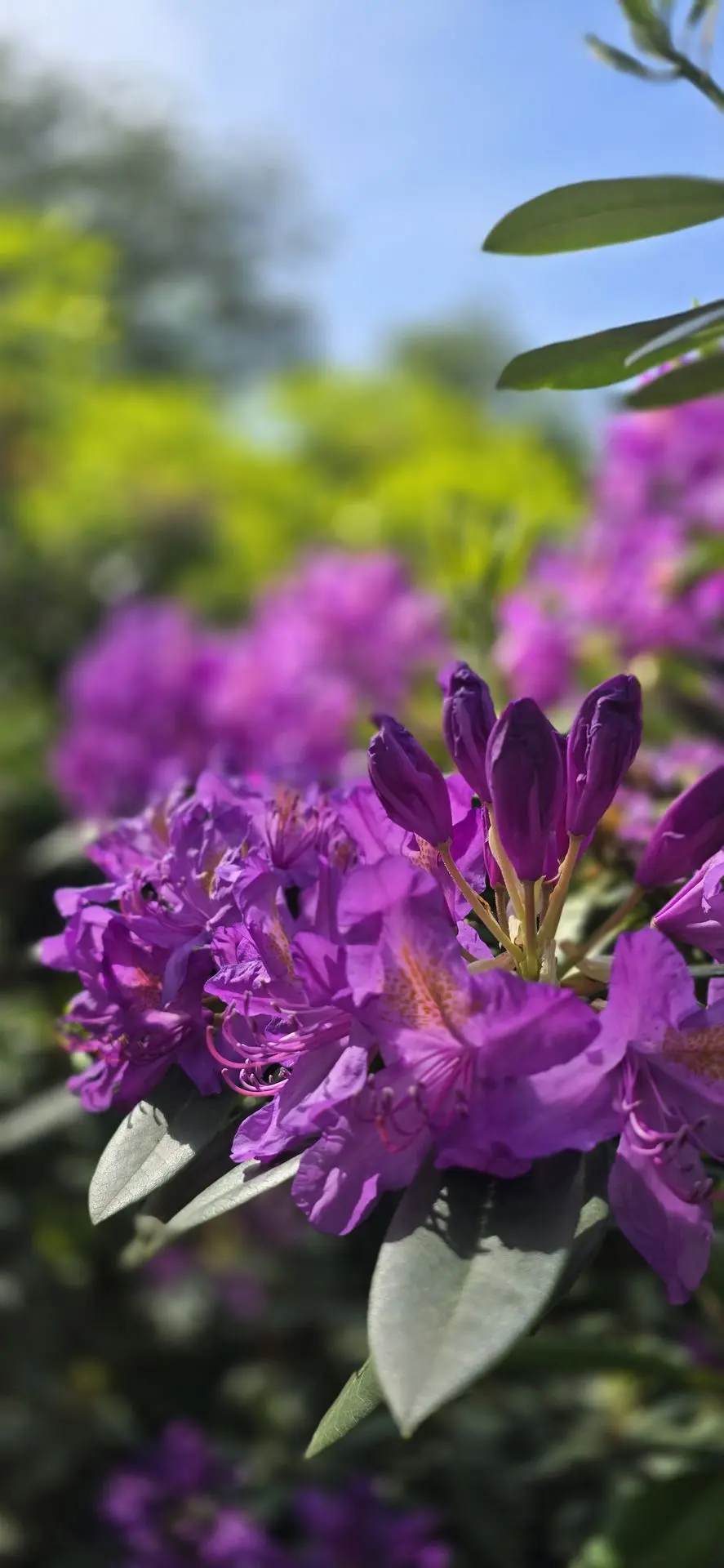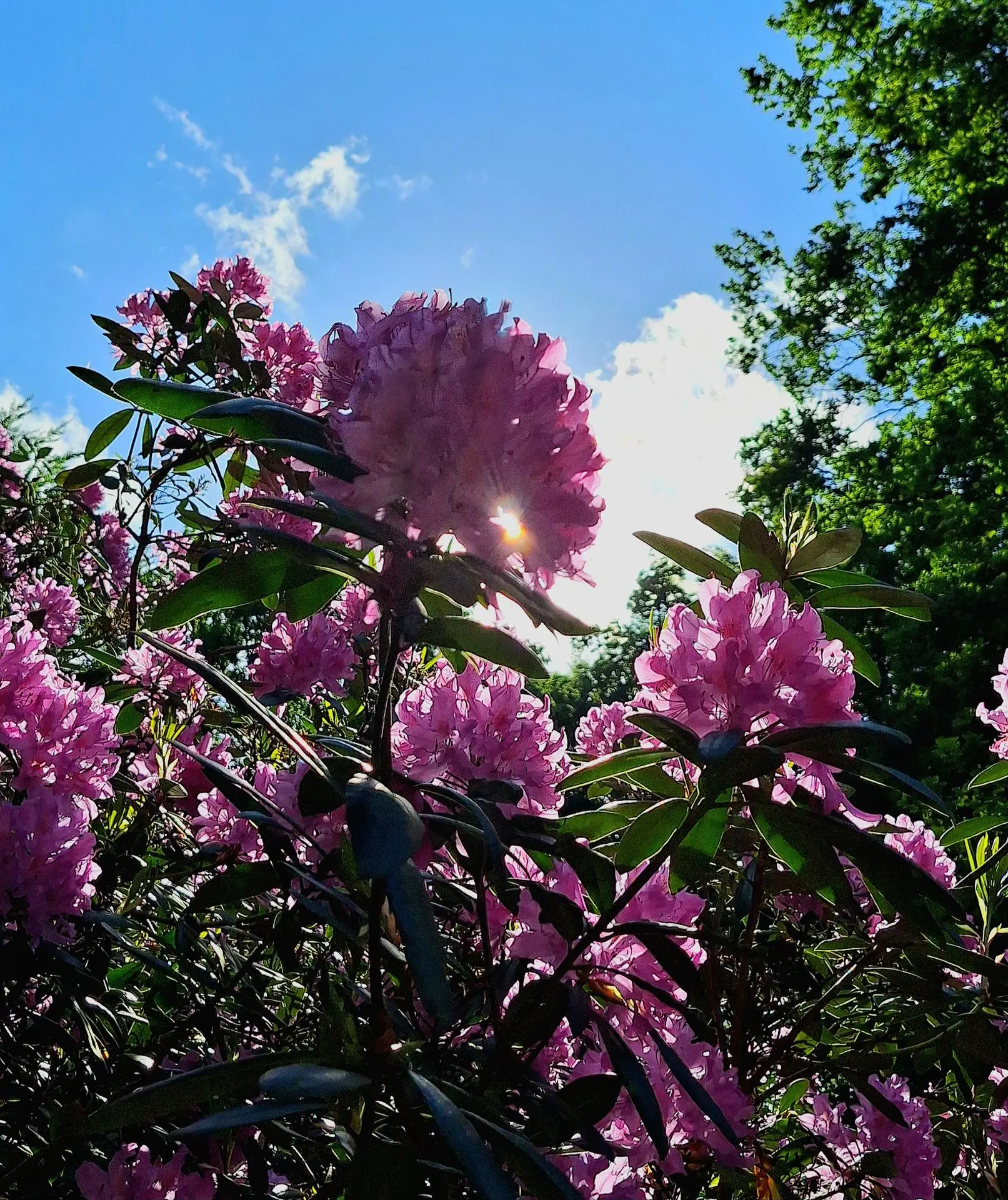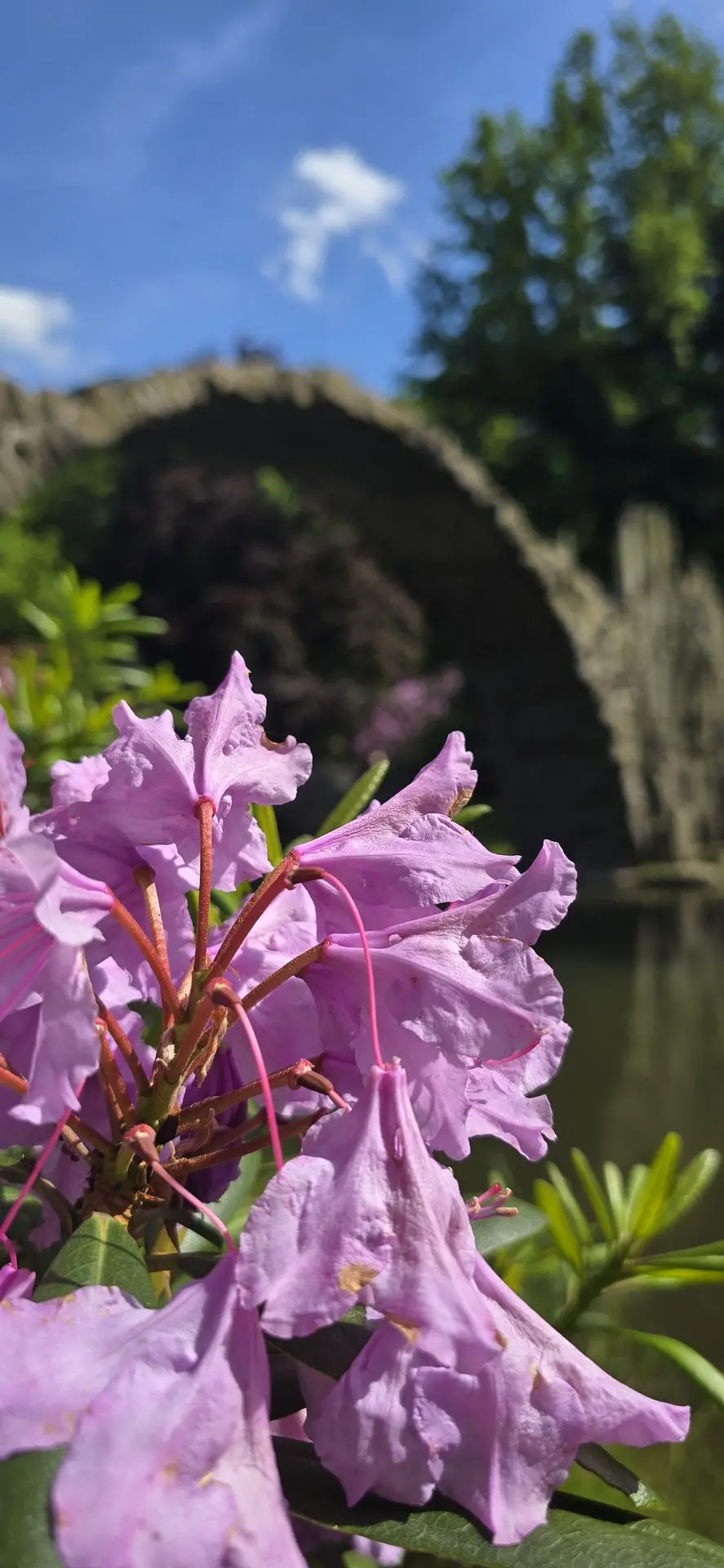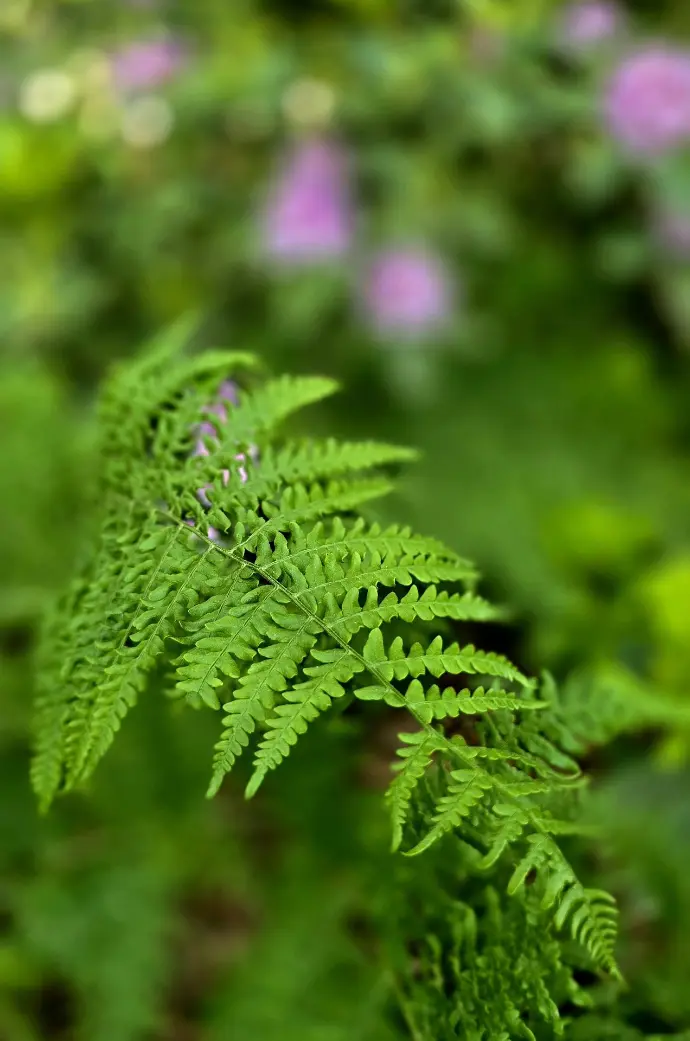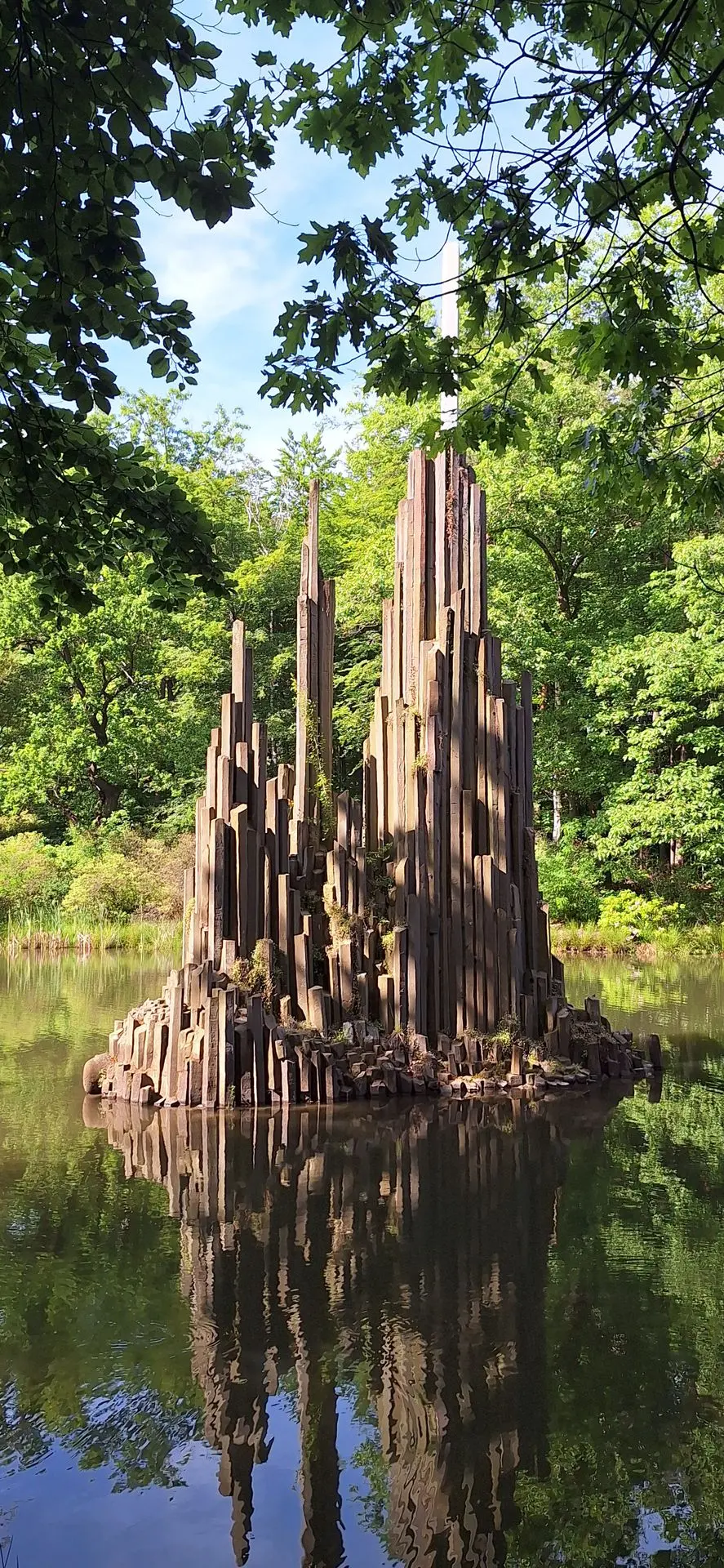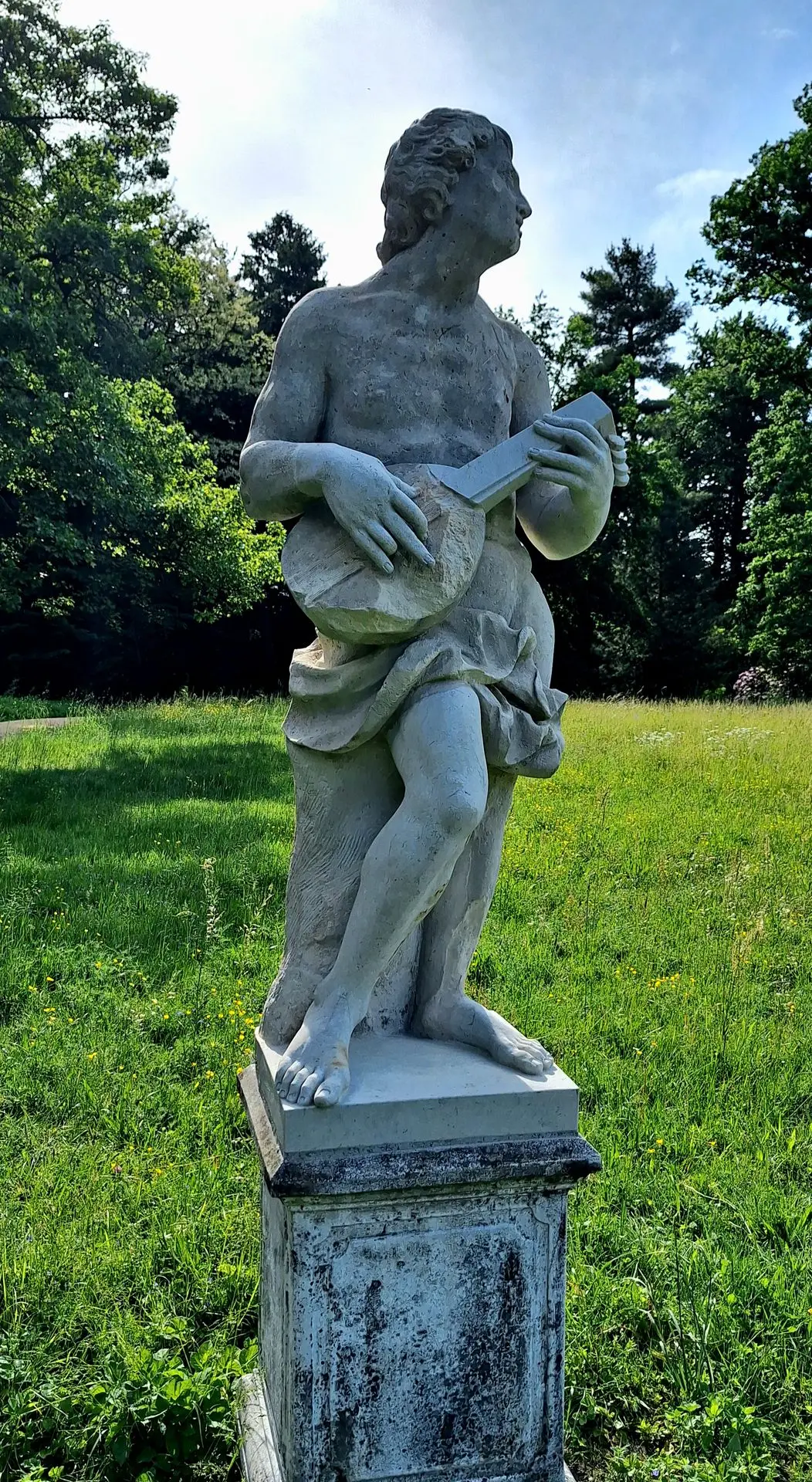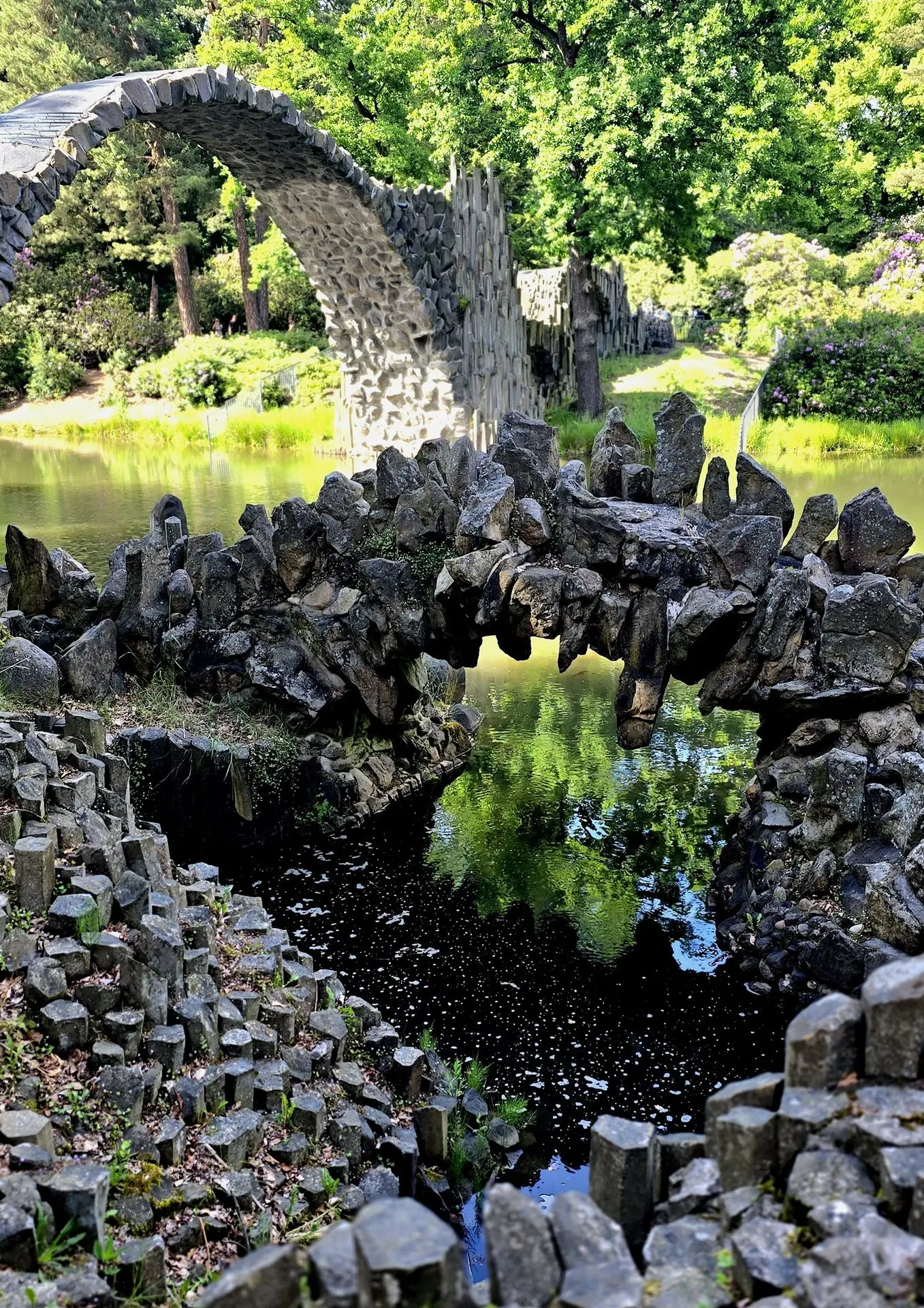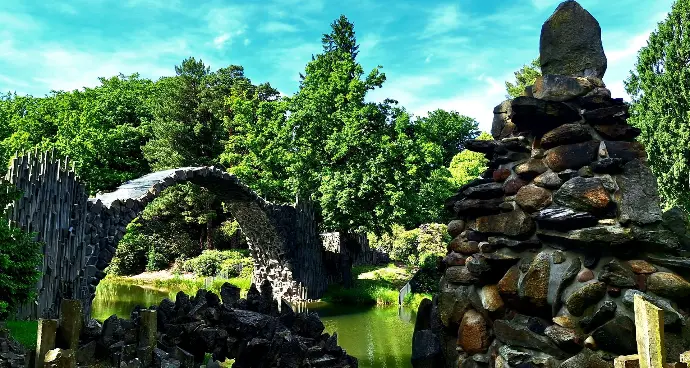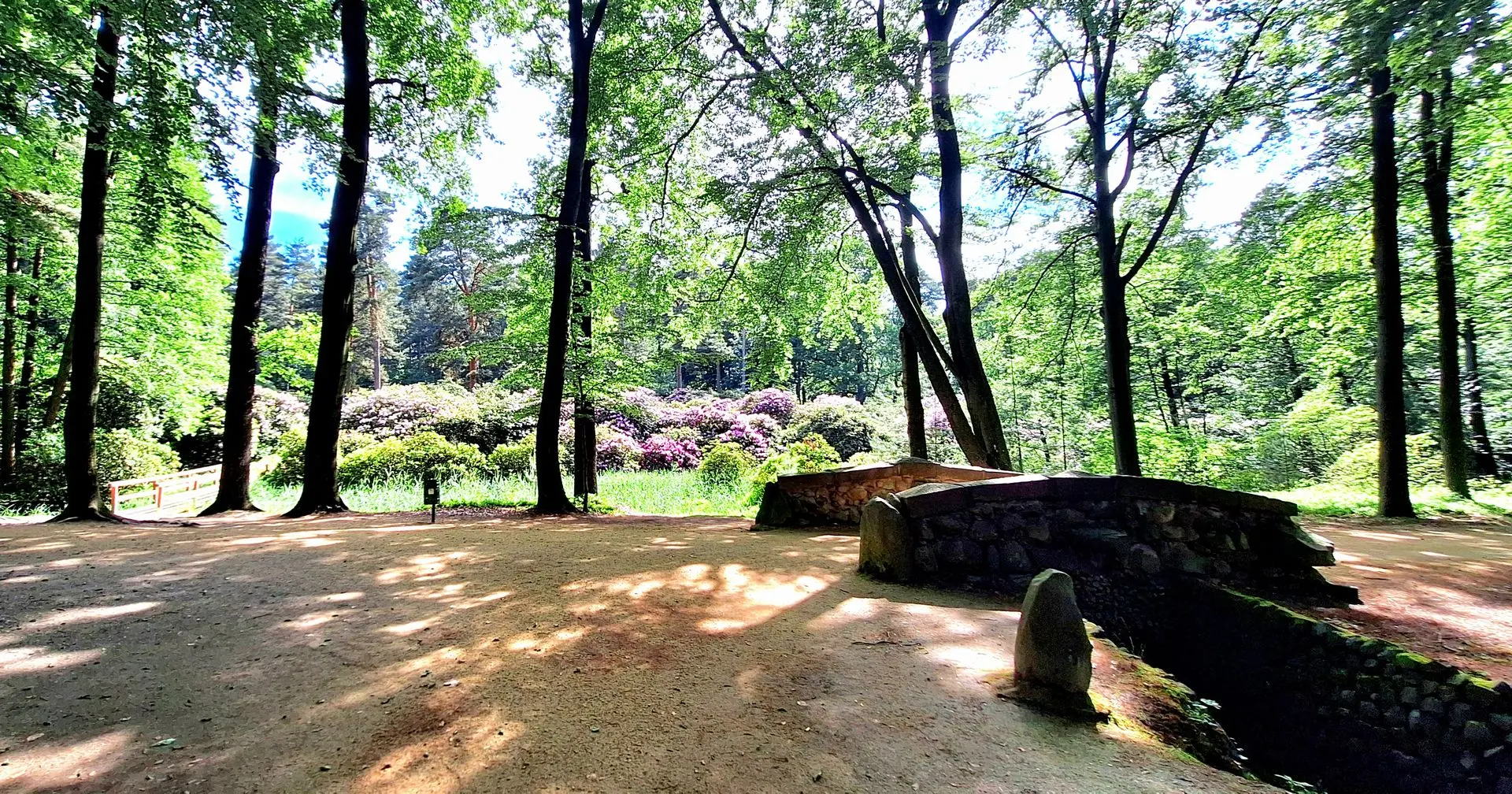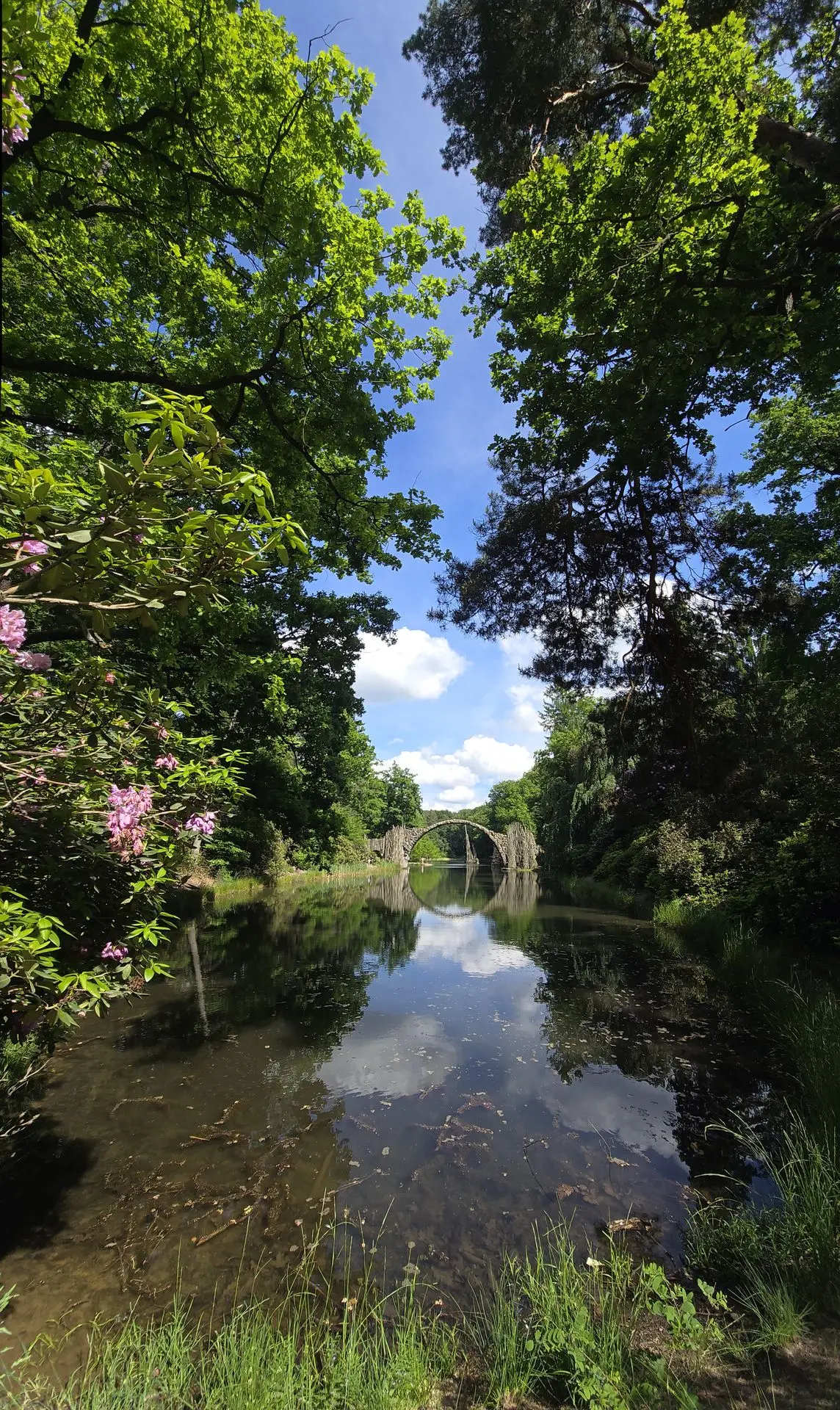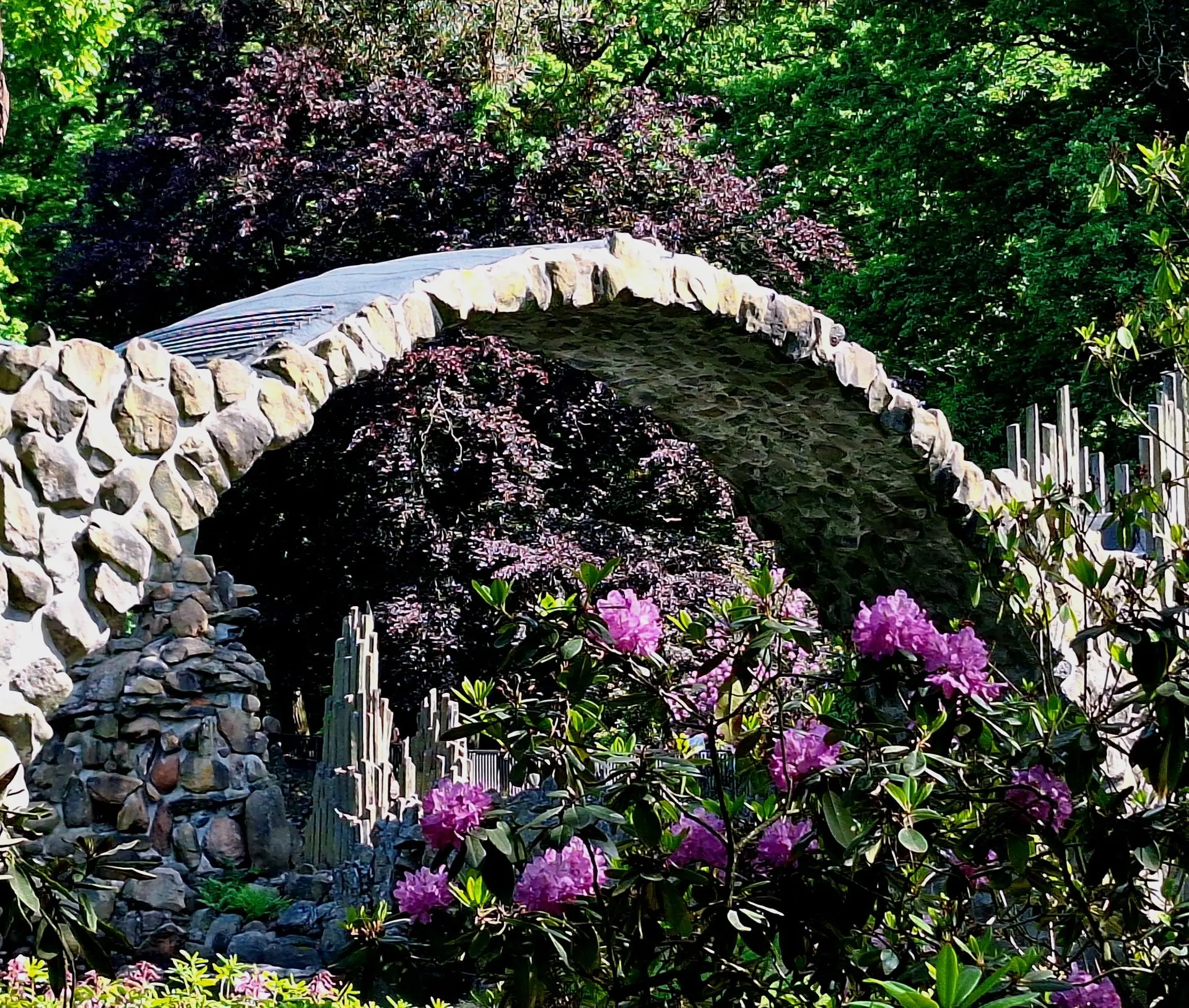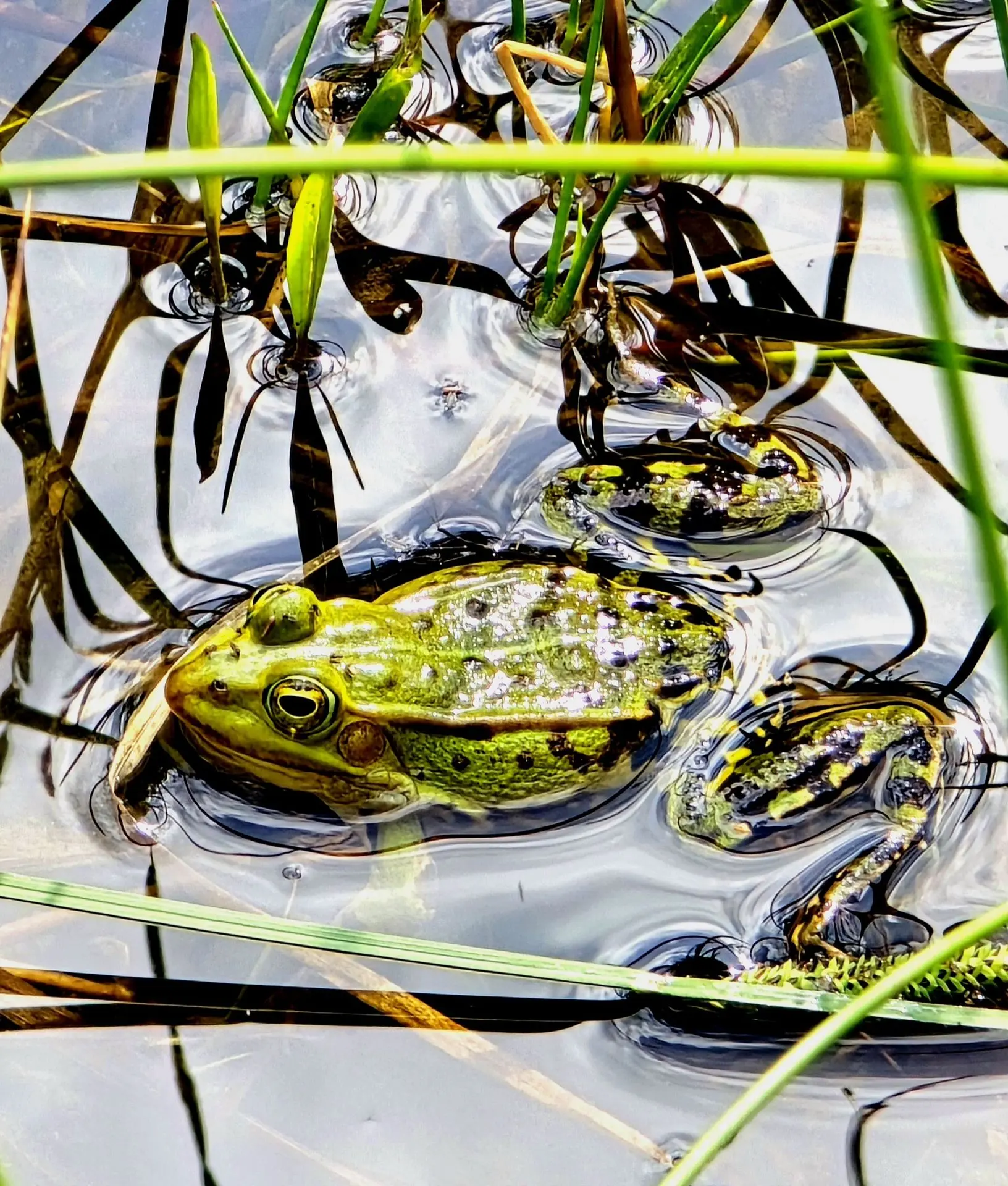In the southeastern part of Saxony, near the Polish border, lies a place that defies the definition of a typical botanical garden. Kromlau Park, also known as the Rhododendron Park of Kromlau, is a unique landscape creation combining architectural fantasy, floral richness, and an aura of mystery. The crown jewel of this site is one of the most photogenic bridges in the world – the Rakotzbrücke, known as the Devil’s Bridge.
This is not only a tourist attraction but also a source of inspiration for florists, garden designers, and lovers of horticultural history. It is a space where 19th-century Romanticism merges with botanical perfection and the power of human imagination.
A Floristic Phenomenon: The Royal Garden of Rhododendrons
Kromlau Park spans over 200 hectares – making it one of the largest English-style parks in eastern Germany. Though not a botanical garden in the classical sense, its floristic diversity and artistic concept make it a mecca for anyone who loves plants – especially rhododendrons and azaleas.
Rhododendrons – Kings of the Park
Rhododendrons are members of the heath family (Ericaceae) and are naturally found in the Himalayas, China, Japan, and North America. In Kromlau, dozens of species and cultivars flourish – differing in color, growth habit, and blooming time. The shrubs here reach impressive sizes, often over 3 meters tall, forming dense, flowering walls along romantic alleys and hidden paths.
In May and June, the park transforms into a colorful spectacle – delicate whites, vivid pinks, deep purples, and fiery reds intermingle in harmonious compositions. The scent of the blooming shrubs fills the air, attracting not only people but also countless pollinators – bumblebees, bees, and butterflies.
Not Just Rhododendrons
Alongside the stars of the park, you’ll also find other valuable plant species and varieties:
- Japanese and Pontic azaleas, forming a lower but very colorful plant layer
- Swamp oaks, purple beeches, Japanese maples, magnolias, and tree hydrangeas add structure and seasonal accents
- Among the forest floor, mosses, ferns, and periwinkles create naturalistic carpets
The park's floristic composition is the result of both botanical knowledge and the artistic sense of its creators, who followed the Romantic principle: “Nature should not be subdued, only gently guided by the gardener’s hand.”
Historical Context: Baronies, Basalt, and the Shape of Romanticism Friedrich Hermann Rötschke – A Visionary from Lusatia
Kromlau Park was established between 1842 and 1873 at the initiative of Friedrich Hermann Rötschke, a wealthy landowner and official. Rötschke was fascinated by Romantic philosophy, which was flourishing in Germany at the time. His dream was to create a “landscape of the soul” – a place where art, nature, and symbolism converge into a single story.
He did not hire a professional landscape architect – he managed the work himself, inspired by English gardens and landscape designs he encountered during travels across Europe. Stone, water, vegetation, and light were to form a “living painting” that would change with the seasons.
Stone – The Language of Kromlau’s Architecture
One of the park’s most characteristic elements is its use of basalt, brought from nearby quarries in Saxony and the Czech Republic. This material was used not only for decorative elements but also for monumental garden architecture – the Rakotzbrücke, Rakotzstein (a basalt obelisk), and other rock formations resembling ruins, grottos, or natural amphitheaters.
Rakotzbrücke – The Devil’s Bridge of Legend - A Masterpiece of Illusion
The Rakotzbrücke was built between 1860 and 1863 as a symbolic gate between worlds. Its construction is based on a perfect arch – the bridge and its reflection in the water create a flawless circle, symbolizing divine perfection, infinity, and the cycle of life.
It was never meant for heavy use – from the beginning, it had an aesthetic and spiritual purpose. For this reason, it’s also known as the “painters’ bridge” – its image, especially in the morning light and on still water, attracted artists and poets.
The Devil’s Legend
In folk tradition, bridges of unusual construction were often attributed to the devil. According to one tale, Rötschke couldn’t find a builder willing to take on such a difficult task. In desperation, he made a pact with the devil, who promised to build the bridge in exchange for the soul of the first creature to cross it. Rötschke tricked him by sending a dog across – enraging the devil, but the bridge remained.
To this day, it's said that on moonlit nights, the devil’s shadow can be seen in the bridge’s reflection. Passing under the arch is believed to bring bad luck – or grant a wish, if your heart is pure.
The Park Through the Seasons – Flora and Moods
- Spring (April–May): Rhododendrons awaken. Early-blooming varieties burst with pink and white
- Summer (June–August): Azaleas and later rhododendrons reach full bloom. The shade of ancient oaks offers rest
- Autumn (September–October): Gold, copper, and crimson – deciduous trees change colors, forming a kaleidoscope. Mists lend the bridge a mystical air
- Winter (December–February): Snow and ice transform the park into a silent realm. The bridge appears as a frozen arc of time
Floristic Inspiration – What Can a Florist Learn from Kromlau?
For professionals working with flowers, Kromlau offers not only aesthetic experiences but also practical inspiration:
- Color combinations: The harmonious palette of rhododendrons and azaleas serves as an ideal example for bouquets and wedding arrangements
- Layered compositions: Varying plant heights, leaf textures, and smooth transitions between beds can be used in garden and patio design
- Symbolic gardening: Creating spaces that tell a story – as Rakotzbrücke tells of the human soul – can inspire florists to design thematic displays
Practical Information for Visitors
- Admission: Free year-round
- Getting there: Nearby towns include Weißwasser, Bad Muskau, and Görlitz. From Poland, the Łęknica border crossing is close
- Photography: The Rakotzbrücke is best photographed early in the morning or at sunset
- Note: The bridge is closed to foot traffic – climbing it is prohibited for heritage conservation reasons
Summary: Kromlau – A Garden with a Soul
Kromlau is more than a park. It’s a living work of art that changes with the seasons and weather. A place where floristry meets history, and nature speaks with the voice of long-forgotten romantics. A space for contemplation and wonder, where every path leads not only through the forest – but through a story.
Author:
Marcin Janas
